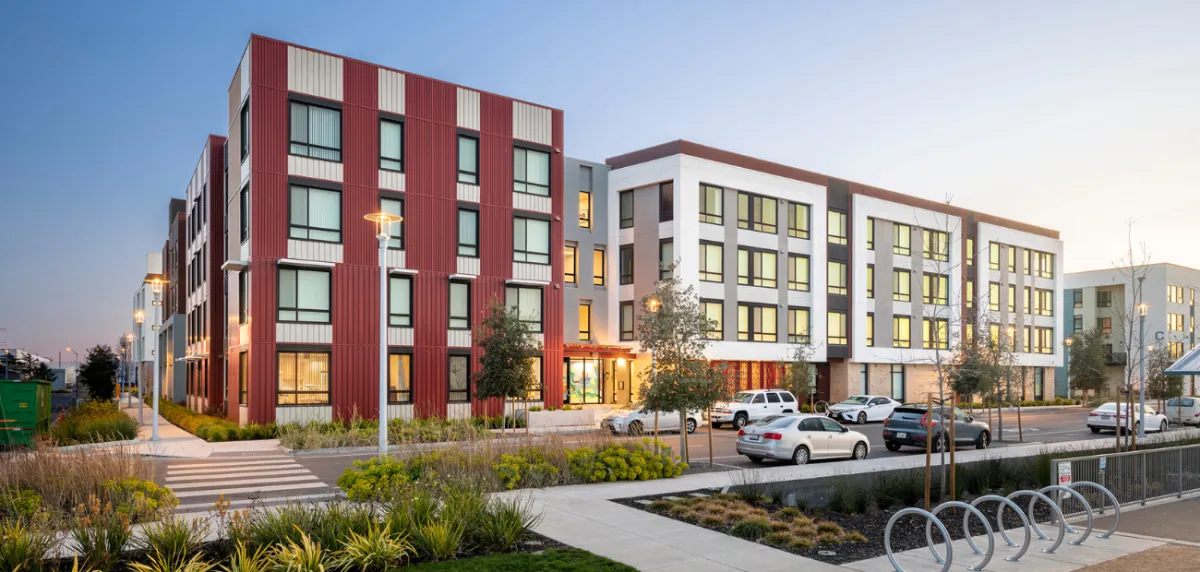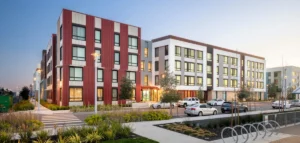Public REITs maintain positive outlooks for the market, buoyed by strong demand conditions, the resilience of the job market, and the relative affordability of the sector.
Strong demand conditions, a resilient jobs market, and relative affordability compared with other forms of housing continued to benefit public real estate investment trusts (REITs) during the second quarter. Despite headwinds present in the market, REITs reported positive financial results in the quarter while expressing general optimism for the future of the sector.
Quarterly Results
AvalonBay reported core funds from operations (FFO) per share of $2.66 in the second quarter, a 9.5% increase on a year-over-year basis. Same-store residential rental revenues increased 6.3% year over year to $629.9 million, and same-store residential net operating income (NOI) increased 5.4% to $435 million
At Equity Residential, normalized FFO per share increased 5.6% year over year to $0.94 in the fiscal second quarter. The REIT reported same-store revenue increased 5.5% year over year, and same-store NOI increased 5.6% year over year. The company noted the supply picture in coastal markets remains “favorable” and demand conditions remain “steady.”
During the second quarter, Camden Property Trust increased core FFO per share to $1.70 from $1.61 in the second quarter of 2022. Same-property revenue increased 6.1%, and same-property NOI increased 6.2% compared with the prior-year period.
UDR reported second-quarter FFO per share of $0.63, a 21% increase from $0.52 per share in the second quarter of 2022. Total revenue increased by 9.6% to $404.5 million, primarily due to growth in revenue from same-store communities, according to the REIT.
Essex Property Trust grew core FFO per diluted share by 2.4% to $3.77 in the second quarter, primarily due to higher same-property revenues. Same-property revenues and NOI increased by 4% and 3.6% year over year and 1.4% and 2.4% sequentially, respectively.
MAA’s second-quarter results were driven by an increase in the average effective rent per unit for the same-store portfolio. The REIT reported a 12.9% increase in core FFO to $2.28 per share in the second quarter. MAA’s same-store portfolio produced growth in revenues of 8.1% and growth in NOI of 8.6% year over year.
Elme Communities reported a net loss of $2.6 million in the second quarter. Core FFO increased 14% to $0.24 per share in the quarter, driven by rental rate growth. Same-store multifamily NOI increased by 10.9% year over year, and overall NOI increased by 11% to $36.3 million in the second quarter.
During the second quarter, Veris Residential reported core FFO per share was $0.16 and same-store NOI increased 21.8% on a year-over-year basis. The company’s same-store portfolio was 95.7% occupied at the end of the quarter.
Outlook
During quarterly earnings calls, executives from the public REITs shared outlooks for the multifamily sector for the short-term future as well as expectations for their respective companies. Here are some forward-looking thoughts, including ones that identify headwinds and tailwinds for the second half of the year.
“As we look forward, we continue to expect our portfolio, which is two-thirds located in suburban coastal markets, to benefit from significantly less competitive new supply coming online than in the Sun Belt and other parts of the country.” —Benjamin Schall, president and CEO, AvalonBay
“We expect economic occupancy to be modestly below our original expectations, trending in the mid-95% range in the back half of the year as we continue to recover homes from nonpaying residents. All our established regions are projected to perform at or above the high end of our original revenue growth estimate, except Seattle, which is projected to be modestly above the midpoint. Additionally, our East Coast portfolio is projected to outperform our West Coast portfolio by approximately 200 basis points for the full year 2023.” —Sean Breslin, chief operating officer, AvalonBay
“The overall theme is that Equity Residential continues to benefit, like most of the multifamily industry, from solid demand, but with the more unique benefit of our mostly coastal portfolio being less exposed to the significant levels of supply beginning to be delivered in the Sun Belt markets. We also continue to manage expenses well in an inflationary environment, which we can expect to allow us to drive more dollars to the bottom line than our competitors over time.” —Mark Parrell, president and CEO, Equity Residential
“Market conditions continue to moderate from the post-COVID unprecedented housing boom that we all knew would happen. New permits are starting to fall, given the difficult financing environment and increased cost of capital. This should bode well for our markets as supply is absorbed over the next 18 months.” —Ric Campo, chairman and CEO, Camden Property Trust
“The nation’s employment situation remains resilient, wage growth is strong, and relative affordability versus other forms of housing continues to favor apartments. Combining this demand backdrop with UDR’s history of prudent capital allocation and operating margin expansion through the adoption of innovative technologies positions our company well for continued growth.” —Tom Toomey, chairman and CEO, UDR
“Our improved outlook reflects the year-to-date resilience of the economy and labor markets both surpassing our initial forecast. This dynamic coupled with slowing apartment deliveries have contributed to a health demand for rental housing in our markets. … Looking forward to the next several years, we see the West Coast as uniquely positioned to generate above-average rent growth.” —Angela Kleiman, president and CEO, Essex Property Trust
“Leasing conditions across our markets continue to reflect strong demand for apartment housing. Leasing traffic remains strong, and move-outs by existing residents remain historically low. Our Sun Belt markets continue to demonstrate solid employment conditions and positive migration trends that are further supporting absorption of the new apartment supply delivering in our markets. Overall performance remains ahead of our expectations we had for [the] calendar year 2023.” —Eric Bolton, chairman and CEO, MAA
“For the first time since early 2021, the affordability outlook is improving nationwide as middle-class wages grew faster than the rate of inflation in May and June. Despite improving affordability, the cost of owning a home or living in recently built apartment communities remains unaffordable for mid-market renters in our markets. Near our communities, recent deliveries are priced 28% to 32% more than our rents. … As we look toward 2024 and beyond, we see favorable demand dynamics for our price points, supported by the financial health of our residents and improving outlook for wage growth versus inflation and the affordability of our rent levels for the deepest section of the market.” —Paul McDermott, president and CEO, Elme Communities
“Despite national Class A net effect of rent growth turning negative across the sector for the first time since the end of 2020, retinal growth in our properties increased by 12%. We remain cautious, however, having recently seen some evidence of a pull-down in rental rates as we lap high-growth months from last year, and that’s a typically slower leasing season.” —Mahbod Nia, CEO, Veris Residential
Source: https://www.multifamilyexecutive.com/business-finance/market-outlook-demand-conditions-remain-strong-in-multifamily-sector_o












